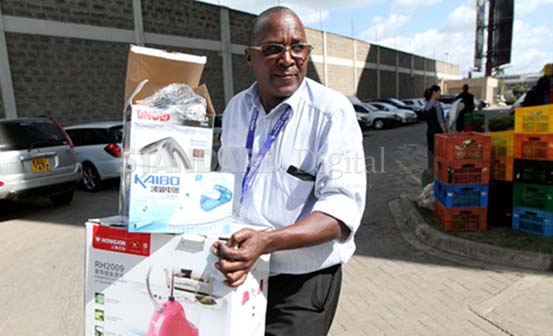
It is disheartening to know that despite successive governments’ hype of supporting local industrial growth, Kenya lags behind its continental and regional neighbours in adding value to its agricultural exports.
While Kenya is stuck at 16 per cent, Tanzania’s processed produce accounts for 27 per cent while Uganda stands at 34 per cent and further afield, Ivory Coast’s is 32 per cent. Kenyans may be forgiven for concluding that their leaders are good at formulating policies and programmes but poor at implementing them.
This explains why many analysts are unanimous that the country will move from an agrarian economy to an industrial and knowledge one when its leaders acknowledge that plans remain just that until they are implemented. Their status does not change just because they were launched in a high profile ceremony.
The large number of unimplemented projects and programmes gathering dust in government offices may explain why few analysts—or indeed ordinary Kenyans—were enthusiastic when the Industrialisation Cabinet Secretary Adan Mohammed launched an ambitious plan late last year that is expected to generate one million jobs. Attention is now fixed on this year’s budgetary estimates to see whether the funds meant to go into the creation of an industrial development fund, industrial parks along infrastructure corridors, support agro-processing and mining among others are factored into it.
But given the country’s long history of low absorption rate of development funds particularly when they are meant for sectors of the economy where back-room deals may be hard to strike, attention is glued too to see what measures the government will put in place to ensure the projects are implemented in time and on budget. This is where the government may consider setting up a dedicated team drawn from the private sector—but from firms that are not competitors to those being created—and service ministries especially Treasury and Trade.
Perhaps, the Government might also consider giving the already existing firms a hand by adopting a tough line on unfair competition posed by the dumping of cheap imports and counterfeit goods. There is a broad consensus that this is an area in which the government is doing particularly badly despite its protestations to the contrary. This conclusion is borne out by revelations that the Anti-Counterfeit Agency has for the longest time been having only seven policemen/women and were only recently increased to 27. Surely, this is—or should be-- unconscionable when it is realised that the economy loses close to Sh70 billion annually to counterfeit goods smuggled into the market.
The argument that the Agency works closely with personnel drawn from Kenya Bureau of Standards and Kenya Industrial Property Institute are not tenable in view of the reality that these, too, are struggling to meet their core mandates because of inadequate funding and personnel.
The Government may want to consider a new funding model for these institutions modeled along the lines of Kenya Revenue Authority, which gets a percentage of what it collects. The increased recruitment of police officers should make the seconding of personnel into these agencies that much easier. All it requires is a better appreciation of the damage these counterfeits inflict on the existing private sector players and the national coffers.
Drawing board
A determined government response in this area would give the wavering manufacturers comfort and assurance that their other concerns—including energy and infrastructure are receiving adequate attention. This purposeful re-building of confidence is not hard to do given the number of power and infrastructure projects that are either on the drawing board or at different stages of completion.
Indeed, the question on the former may soon shift from whether the country has adequate supplies to one on whether it can utilise all of its installed capacity at a price that gives it a competitive edge. The quest for adequate infrastructure may take a little longer to achieve partly because it not only costs more than the country can afford given its current but its benefits –though real—are harder to quantify.
This also makes it harder for the government to put together a bankable document which can attract private capital from local and private banks.
 The Standard Group Plc is a
multi-media organization with investments in media platforms spanning newspaper
print operations, television, radio broadcasting, digital and online services. The
Standard Group is recognized as a leading multi-media house in Kenya with a key
influence in matters of national and international interest.
The Standard Group Plc is a
multi-media organization with investments in media platforms spanning newspaper
print operations, television, radio broadcasting, digital and online services. The
Standard Group is recognized as a leading multi-media house in Kenya with a key
influence in matters of national and international interest.
 The Standard Group Plc is a
multi-media organization with investments in media platforms spanning newspaper
print operations, television, radio broadcasting, digital and online services. The
Standard Group is recognized as a leading multi-media house in Kenya with a key
influence in matters of national and international interest.
The Standard Group Plc is a
multi-media organization with investments in media platforms spanning newspaper
print operations, television, radio broadcasting, digital and online services. The
Standard Group is recognized as a leading multi-media house in Kenya with a key
influence in matters of national and international interest.






